» Part 1: Irricana, Pioneer Acres, Long House, and Irricana United Church
» Part 2: Pioneer Acres, Pioneer Truck Museum, and Prairie Cook Car
The Town of Irricana
Combine the words “irrigation” and “canal” and you have the name of a small town in Southern Alberta named “Irricana,” established in 1911. This year (2011) marks the town’s centennial celebrations.
Many moons ago there was a website on the ‘net that collected lovely historic vignette’s submitted by Irricana’s residents; the site has since disappeared but many of these collected stories can now be found on the Irricana website.
Below is a snippet about the Irricana Hotel (pictured above) submitted by Harvine Gilberg. The full story (and many more) can be found here.
The progress of the town was a hard thirsty business with the building of the railway and the town and the farmers busily breaking sod for the new farms so it was felt that a “watering hole” was needed. The “powers that be” decreed that it could only be housed in a Hotel and that such a hotel could only be built in a town of proper size. Unfortunately, the facts were that the town was too small but they (the thirsty villagers) were short on citizens but long on ingenuity.
Someone came up with the idea of building a row of shacks and furnishing them with a stove, bed and table and chairs, with a few other homey touches added so that when the inspector came to look the situation over things would be impressive…
Pioneer Acres
Getting to Irricana an easy half-hour drive from Calgary. It’s well worth the trip to visit Pioneer Acres, which we accidentally stumbled upon on a pass-by to Drumheller. It was (I would say) the most pleasant discovery of the summer.
Pioneer Acres is open seven days a week, May 15 to September 30 from 9-5. The cost is $7 for adults and free for children under the age of 12. Make sure you have cash on hand, which is the only means of payment accepted.
The Long Family House
As you drive towards the park entrance, the first thing you see is a well-preserved example of an early Alberta pioneer house. After paying admission, you’re taken via a golf cart to the house and outlying buildings.
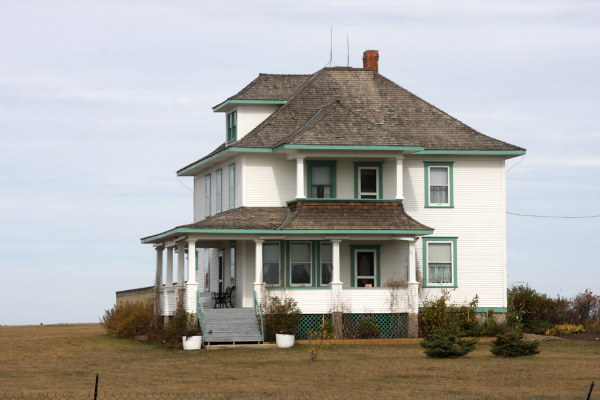
Like many of the early pioneers to Alberta, George and Salome Long moved to Irricana from Cando, North Dakota in 1911 when the Canadian Pacific Railway advertised cheap and fertile farmland to anyone willing to farm it.
In North Dakota, George was a school teacher and Salome an accomplished musician. When they arrived in Irricana, George began farming and pursuing local business opportunities. Salome continued her music and taught voice and piano lessons. Their daughter, Ester, eventually became a well-known musician who studied in both Chicago and Calgary.
George and Salome soon recognized their need for a larger house and in 1914, the Long House was built.
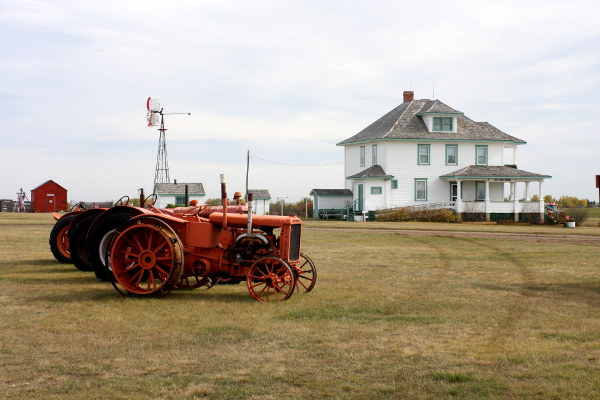
The first structure you encounter when you pull up to the house is a windmill — part of a rather inventive wind-powered system. The house was one of the first to have running water, supplied via a large water tank in the attic. The windmill pumped water from a water source, across the yard, and into the tank in the attic.
In addition to this, a carbide gas/pressure tank system was used to light the house. These were eventually replaced by batteries because George was nervous about the gas pressure system. Electricity came to Irricana in 1949.
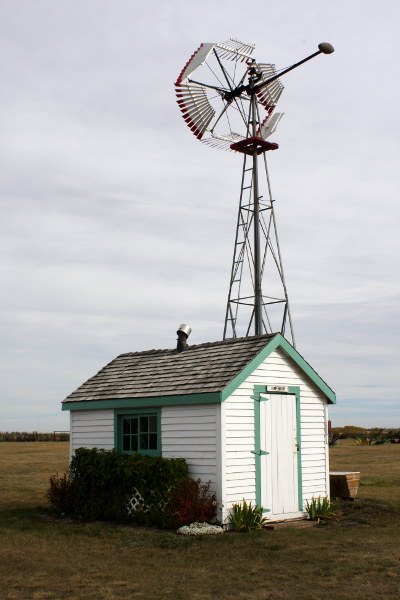
Inside the house, you travel through time to experience what it was like to live in a world without electricity, the internet or television; a time when music was the primary source of entertainment and family, community, ingenuity, and hard work were an important part of everyday life.
Below is a view of the kitchen. The shelves to the right (next to the bright red pump) are actually a dumbwaiter that was originally used to transport food and goods between the different levels of the house. The pulley system on the top shelf is just out of view in this picture.
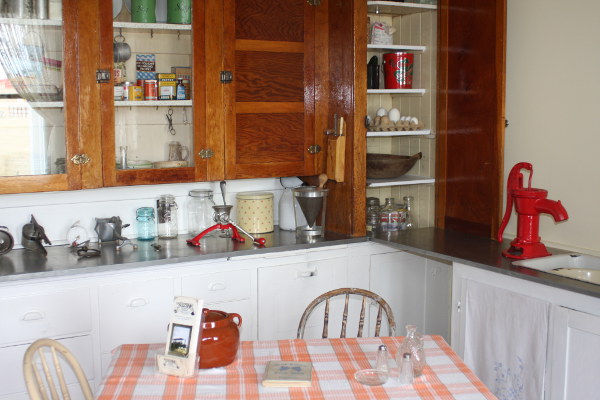
A view looking down into the dining room and parlour. Much of this family’s life revolved around dinner parties and music.
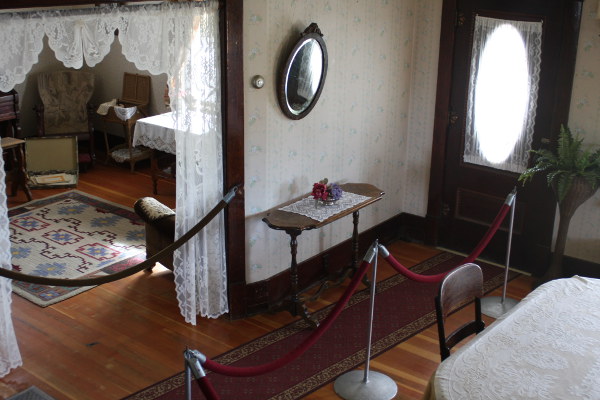
The nursery where much frolicking and fits of imaginative play must have happened. It was difficult to get single panes of glass. However, George spared no expense and had glass imported. One window outside the nursery is original to the house.
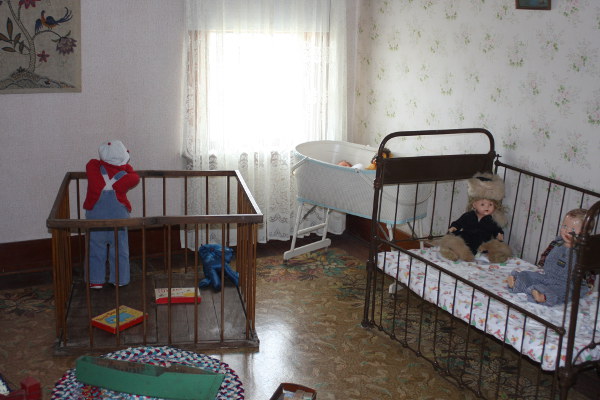
Below is the spare bedroom, which wasn’t much of a bedroom in the winter. As many Canadian’s know, winter in Alberta is long, hard and brutally cold. Winters are tough on livestock as well as people.
Small animals and birds like chickens rarely survived the winter. To keep their livestock alive, the Long family kept them in the spare bedroom during cold spells.
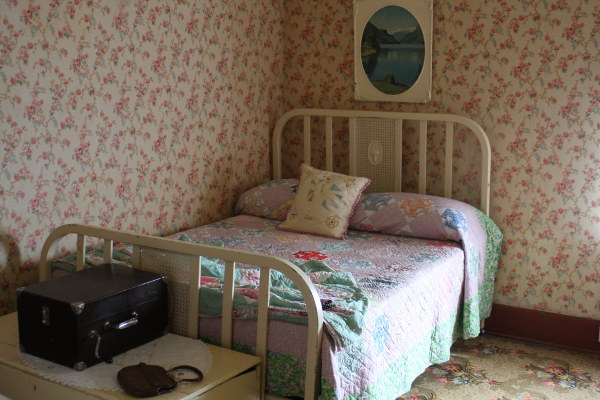
George and Salome, their children, and grandchildren lived in the house until 1992. It was then donated to Pioneer Acres and moved to its current location in 1993. The interior that visitor sees is a “restored to 1929” version of the house.
United Church (West)
Not far from the town, along a quiet stretch of highway, you’ll find the Irricana United Church, which was built in 1919. If you have a moment, take time to explore the early pioneer graves that date to this time.
Remember Esther Long, the musician from above? She and her husband Jack Crawford were the first couple to hold a “formal” wedding at this church in 1929.
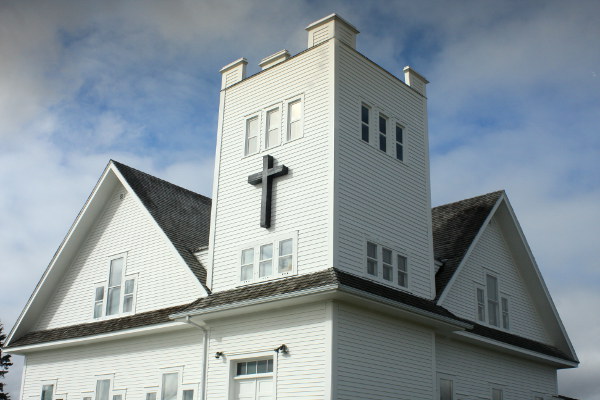
——————————————————————————————————————–
–> GPS Coordinates: 51.299781°N 113.604913°W
–> Google Map: Uniquely Alberta Google Map
–> Cost: Adults $7, Children 12 & U are free (cash only)
–> Season: May 15 – September 30, 7 days a week, 9:00 am – 5:00 pm
Kid Rating: 3.5 out of 5 because I liked visiting the house (Long House) and the tour lady Elizabeth was really nice and friendly. I liked the school play area and liked going from building to building in a golf cart. There were lots of old trucks. I really want to go back again.
Adult Rating: 4.5 out of 5 because it was easy to find and interesting. The museum, grounds and collections are the results of years of volunteer work and donations. You could really see the dedication and effort put into restorations. There was a little bit of something there for everyone. I really enjoyed the Long House; it was like finding an unknown jewel on the prairies.
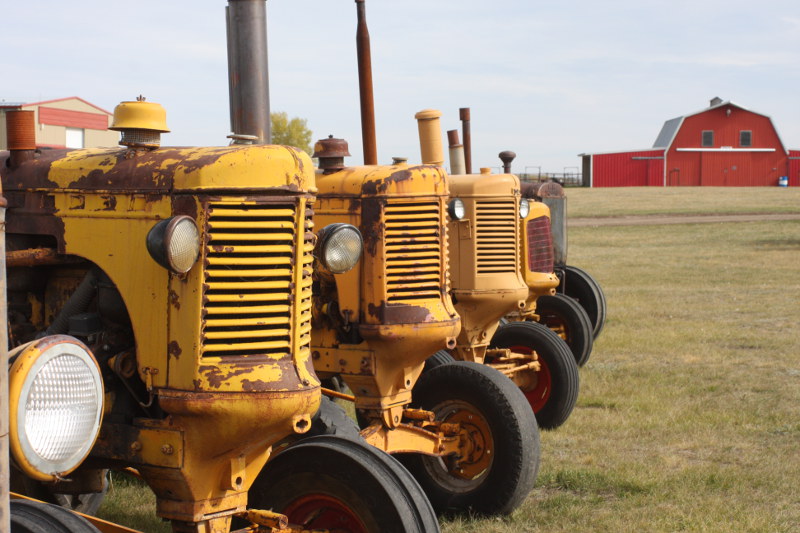
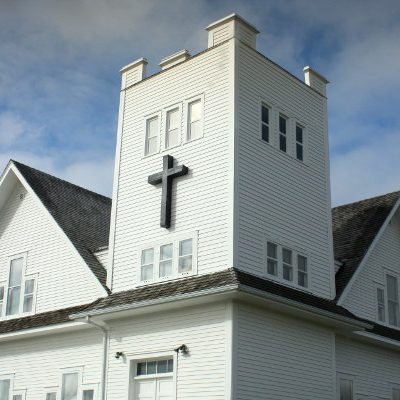
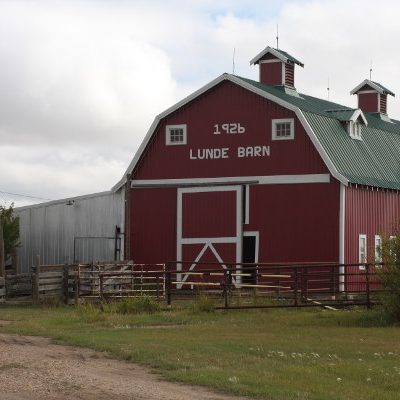
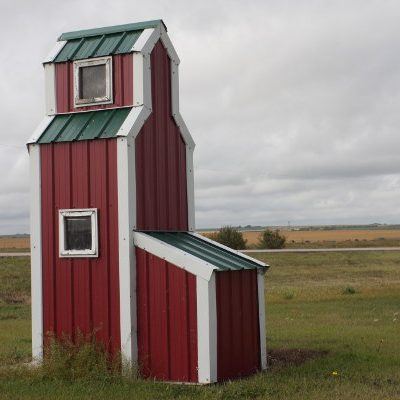
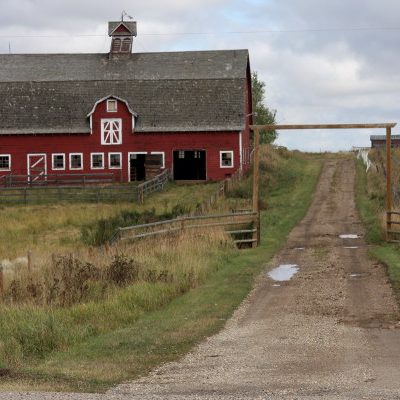
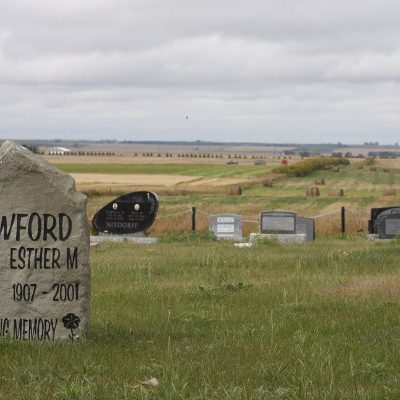
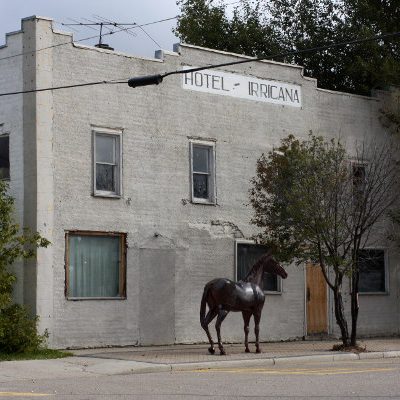
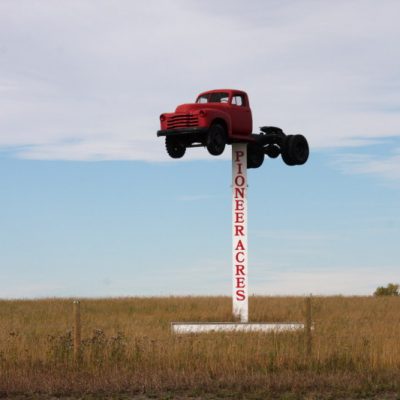
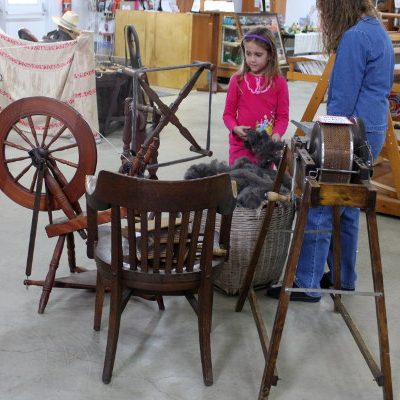
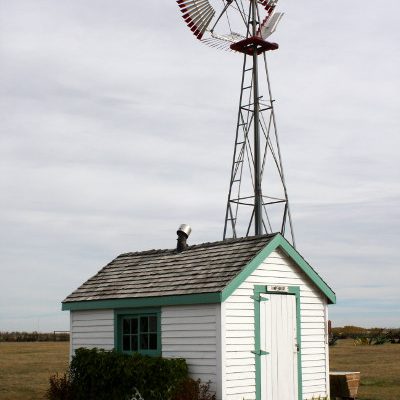
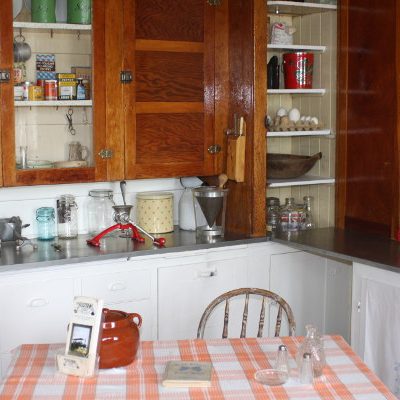
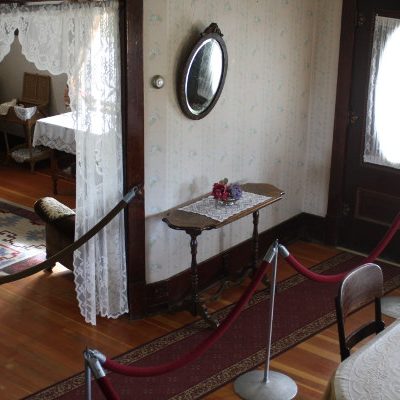
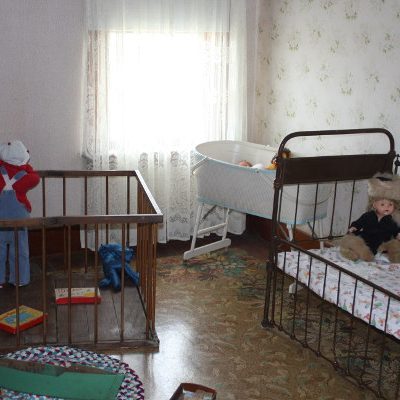
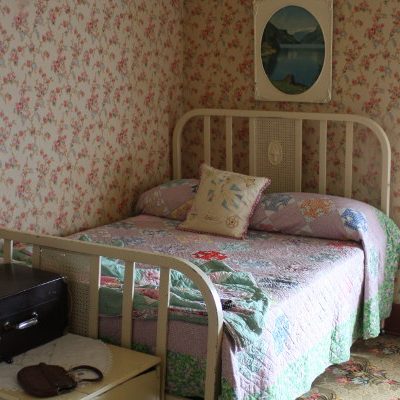
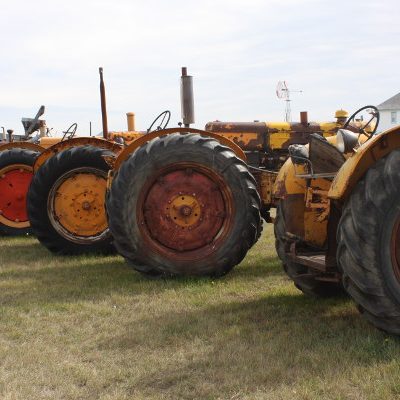
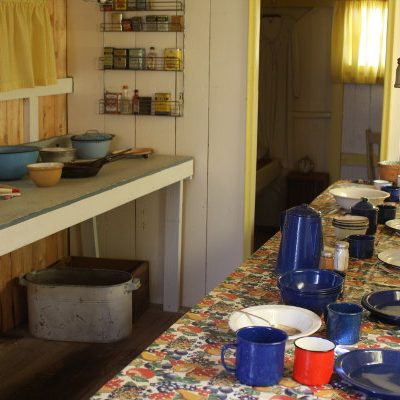
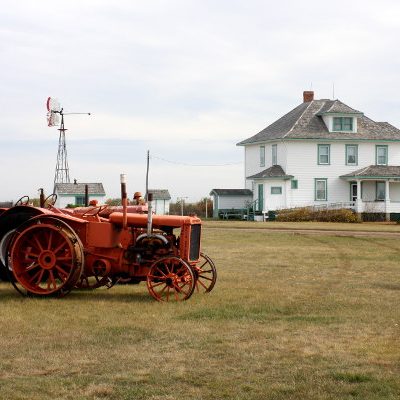
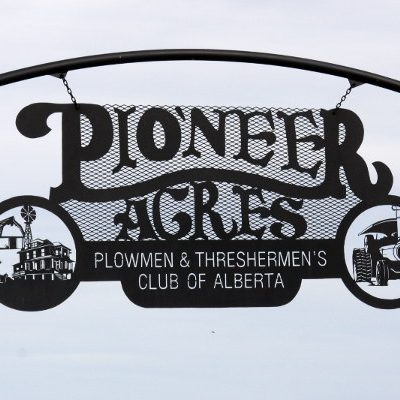
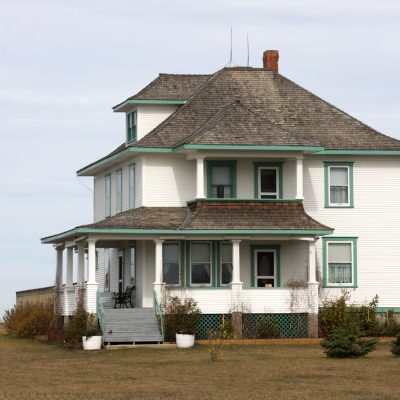
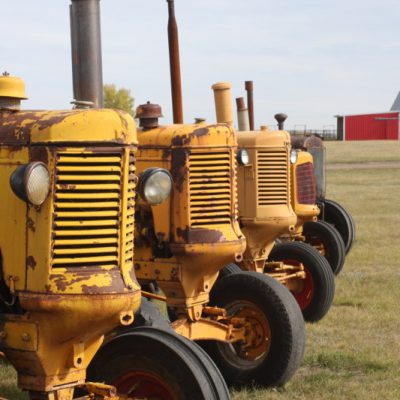
Oddly enough, the house looks pretty much like any number of square frame houses in NS from the last couple of centuries.
Interesting to see the house I spent so much time in as a child, and the church I attended, through the eyes of someone else. Really nice write up!!
Wow travel down memory lane. Ester Long was my great great aunt. Harvine Gilberg was my great grandmother. Her and grandpa Gilberg raised my mother along with lots of other children they took in over the years. I grew up around all these places you show in all the pictures.
Most weekends, summers and any extra time I had, I would be out in Irricana. I used to love going to my great grandparent’s farm, uncle Jacks farm, uncle Bruce’s farm, uncle Davids farm and always loved family reunions around auntie Esters house.
Before Harvine(my great grandmother) died we had a family reunion. Their was a picture taken that had 8-9 generations in it (all women).
I miss being in the town parade as a kid for the founding fathers family float for Irricana. I miss riding horses with my cousins, helping grandma and grandpa Gilberg around the farm, having huge x-mas eve parties with all the family, and seeing the northern lights and stars driving home to the city. Thank you to whoever put this all together. It really touched a soft spot in my heart. Huggles.
Brianna Hughson
Hi Aria and Brianna. Thanks for stopping by and adding you memories to the post!
This is my Aunt Esters and Uncle Jack’s home. It was about 2 miles NW from where it now resides at http://www.pioneeracres.ab.ca. Uncle Jack passed away in the early 80’s but Aunt Ester stayed there until she was 90 I believe. I would stay overnight quite often in the summer when I was younger.
Aunt Ester’s parents, George and Salome Long not only built this house themselves, but they also handmade every tool needed to build a house. Aunt ester was an extremely intelligent and hard working women. She was famous for what she was able to grow where others could not. Right up until it was time for Aunt Ester to move to a lodge. She heated her home the same way they did in 1914. She shoveled and burned coal. To further understand the quality of this woman of unwavering faith. At 92 years old and twice a week she would drive herself and deliver “Meals on Wheels” to the “old people”.
My grandparents are Arvid and Harvine Gilberg. In 1972 they semi-retired and we took over the farm that Grandpa homesteaded in 1922. It resides directly across from Pioneer Acres. Our neighbour was Mary Culp. Grandma and Mary were lifelong best friends.
I was baptized in that church. as was my mother, Inga Gilberg-Kronlund. She was born in the Calgary General Hospital and so was I (on the same day as Grandmother). My mother went to Kathryn School as did myself, my brothers Dean and Darren, and my sister Lori Kronlund-Grbac.
I have no idea where I would start on memories and stories about these truly amazing pioneers, but they are endless and beautiful.